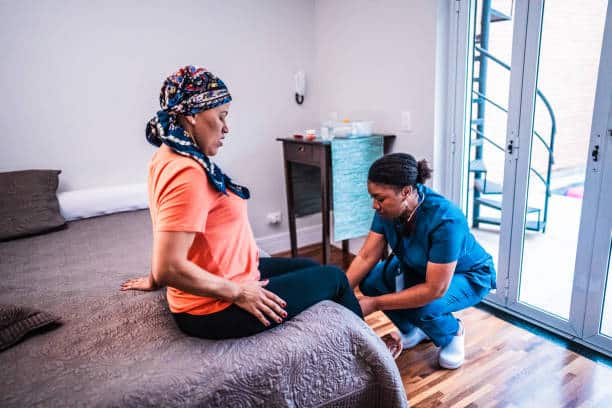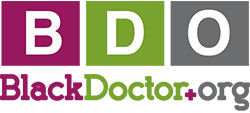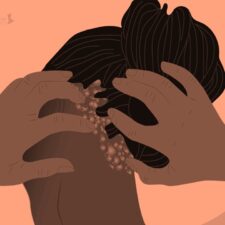
Cancer is a complicated beast, and no one-size-fits-all. While some people can go through chemotherapy and radiation therapy with minimal severe side effects, other individuals are completely ravaged.
This is why it’s always important to incorporate other, complementary therapies and practices to help. Given that breast cancer and other cancers affect Black women at significantly higher levels (with higher mortality rates), finding alternative treatments is vital.
In addition to the typical surgical and therapeutic cornerstones of care, complementary therapies such as oncology massages are gaining more traction than ever.
So let’s get into it. We’ll explore the evidence behind oncology massages and their potential to greatly help Black women navigating breast cancer.
Understanding Oncology Massages
If you haven’t heard of oncology massages, they’re a specialized form of massage therapy adapted to the unique needs of cancer patients. Unlike standard massages, these use gentle, customized techniques for every treatment-related sensitivity. That means everything from lymphedema to neuropathy, or even surgical scars.
Performed by therapists trained in cancer care, these massages are suitable for patients at any stage of treatment or recovery. For Black women, who often face barriers to holistic care due to systemic inequities, oncology massages are a beneficial, non-invasive way to improve health & wellness.
One of the main reasons oncology massages work is through their activation of the parasympathetic nervous system. In turn, this helps to reduce anxiety, improving lymphatic flow and mitigating treatment side effects.
Also known as the “rest and digest” system, the parasympathetic nervous system (PNS) directly counteracts the stress-induced “fight or flight” response. Because breast cancer often elevates stress hormones like cortisol, hurting immune function and recovery, this PNS role is crucial. From just a 30-minute massage, cortisol or stress levels can be reduced by as much as 30 percent.
This shift supports immune health and tissue repair, which is vital for Black women who face compounded stress from various sources.
This resulting restorative state also helps patients tolerate treatments like radiation better, which is important for anyone with experience with its nasty side effects. Regular weekly, 30-minute sessions can sustain these benefits in a natural, trustworthy way.

RELATED: 4 Benefits Of Daily Breast Massage
Other Benefits of Oncology Massages
When it comes to breast cancer, anxiety plays a major role. Whether it’s due to the diagnosis itself or psychological and mental changes resulting from the cancer and its treatments, anxiety is known all too well among cancer patients.
Fortunately, there are ways to address this. By lowering sympathetic nervous system activity and boosting the release of ‘feel-good’ endorphins, oncology massages effectively treat anxiety. Weekly massages have been repeatedly linked to lower levels of reported stress and higher levels of reported mood. In other words, a win-win!
The setting and circumstances of a massage can also offer a non-judgmental way to address anxiety. Think of it as a ‘safe space’ where emotional relief occurs in the trained, tender hands of cancer care professionals.
Oncology massages also improve lymphatic flow, as previously mentioned. Many breast cancer treatments, like radiation or lymph node removal, can impair lymphatic flow, making oncology massages even more beneficial.
Given their light, directional strokes, these massages effectively stimulate lymphatic drainage, lowering inflammation and allowing for the removal of nasty toxins. Some studies have even linked twice-weekly sessions over time to reductions in the physical volume of swelling, or lymphedema.
But this isn’t the only thing that oncology massages can do for treatment side effects and cancer consequences. All you have to do is think about chemotherapy, radiation, and hormonal therapies to understand the issues. Many times, these treatments lead to nausea, nerve pain, fatigue, and joint pain – all things which massages can address.
For many Black women, weekly massages have been shown to decrease chemotherapy-induced nausea and improve sleep quality. Actually, sleep quality can be dramatically improved by these massage therapies. This has also been linked to immune system support, an obviously critical factor in feeling better during cancer treatment.
How to Get The Most Out of It
If you’re looking to incorporate oncology massages in your everyday care, you can do so with relative ease. To access oncology massages, you should first seek therapists certified by organizations like the Society for Oncology Massage (S4OM). These professionals are trained to work safely with cancer patients.
On average, the typical session lasts 20–60 minutes and costs $50–$120. That said, some cancer centers offer subsidized or even free services. All you have to do is check with local hospitals, nonprofits like Susan G. Komen, or community health programs for affordable options.
Black women can also advocate for massage therapy coverage through insurance – it just depends on the health plan. Not all include complementary services, but many now (thankfully) do.
To begin, start with one session per week and adjust based on your schedule and therapist recommendations. Don’t be afraid to communicate openly. Discuss your symptoms, treatment course, and any sensitivities or vulnerabilities to the approach.
For maximum benefits, you can combine your oncology massages with other supportive practices (i.e., gentle yoga or nutrition counseling).
However, it’s important that you exercise caution where you can. Although generally safe when performed by professionals, oncology massages are not always right at the time. For instance, you should avoid massages during active infections or if you have low platelet counts. Likewise, if you have other unstable medical conditions that crop up, you should exercise caution.
Always consult your oncologist before starting, particularly if you’re dealing with lymphedema, bone metastases, or recent surgery. Black women, especially, should look for providers with cultural awareness and competence, as certain issues are more pronounced in the Black population.
Overall, using oncology massages effectively is about taking a comprehensive approach. These therapies are no replacement for typical treatments, but can certainly be used in conjunction for the most benefits.
Whether it’s the lymphatic flow improvement, parasympathetic activation, lower anxiety, or relief from other treatment side effects, oncology massages can go a long way in making you feel better! Just be sure – as always – to seek certified therapists, look for affordable options, and keep in touch with your healthcare team for the best outcomes possible.









